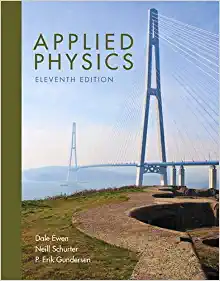Questions I need help with on the left. Right is the equations I need to use to solve the questions on the left. Thank you!
X X + Edit . PHYS UNIT 4 | Quizlet x Course Hero X + ucture.com/courses/82672/pages/hubbles-law-lab?module_item_id=4908086 4 Q W * IA tructure.com/courses/82672/pages/hubbles-law-lab?module_item_i... [ Q M gmail mail O quizlet youtube Citrix Cengage board M gmail mail Q quizlet youtube Citrix Cengage an equation that solves for the distance, D, with a known speed, v, for the observed value of Ho (equation 4). (Eq. 1) Slope x (3 x 10' km s !) = Ho km s Mpc If you look closely, then, we have a unit of distance per time per distance which should equal 1 over time. An inverse time? (Eq.3) U = Ho X D What could this strange unit signify for our non-cyclic universe? It is the inverse of the time over which the universe has been 3 x 10' km s 1 3 x 10' Mpc 3.262 Mly 978 expanding. In other words: the inverse of the Hubble constant is the approximate age of the universe! We call this (Eq. 4) DH = Ho billio Ho km (s Mpc) -1 Ho 1 Mpc approximate value the Hubble Time as mentioned earlier. We can also ask ourselves an interesting question: at what distance Ho km (s Mpc) from an observer is the universal expansion equal to the speed of light? This distance defines what we call the Hubble Limit Part 4a: Evaluations that we discussed earlier. Record the following answers to one (1) decimal place. 7. Using equation 1, what is Hubble Constant H O in km/s/Mpc? To calculate the Hubble time, we need to rectify the units of the Hubble Constant. The Hubble constant is in km per seconds per Mpc. If we change Mpc into kilometers, we can simplify the Hubble constant into units of inverse seconds. Then we can convert the seconds into years. Our Hubble constant would then be in inverse years. We could flip this to say that the inverse 8. If the accepted value (vA) is 70 km (s Mpc) " what is the percent error of your evaluated value (VE) in of the Hubble Constant is in the units of years. The inverse of the Hubble Constant is the Hubble Time! See below: #7? 1 Mpc = 3.086 x 109 km % Error (8) = A-UE x 100% 1 yr = 3.154 x 10' s Ho km s Mpc-1 x 3.154 x 10's yr 1 Ho km s Mpc-1 3.086 x 1019 km Mpc 9.78 x 10ll km yr (Mpc s) -1 9. If the number of data points were to increase from 20 to 200, would you say our % error would increase or decrease? 978 - tH Ho km s Mpc-1 - billion years (Eq. 2) 10. Using equation 2, what is Hubble Time tH in billions of years% Error (8) - LATUE x 100% To find the distance at which the Hubble limit is reached we merely need to reimagine our equation. We will determine the distance at which the expansion speed equals the known speed of light. The equation for this expansion is pretty well linear and thus we can approximate it as equation 3 below. From there we can develop an equation that solves for the distance, D, 11. If the accepted value is 13.8 billion years, what is the % error of your Hubble Time? with a known speed, v, for the observed value of Ho (equation 4). Eq.3) v = Ho X D 12. Using equation 4, what is Hubble Limit DH in billions of light years? C (Eq. 4) DH - Ho 3 x 10' km s-1 3 x 105 Mpc 3.262 Mly 978 Ho km (s Mpc) Ho 1 Mpc billion lightyears Ho km (s Mpc) Part 4a: Evaluations Record the following answers to one (1) decimal place. Previous Next 7. Using equation 1, what is Hubble Constant H O in km/s/Mpc? 2 If the accented value los Lic 70 1am ( M..) cror of your evaluated value /or Lin # 72 68F 4:36 PM11 + B 1 2 13 4 Data Table 1: Distance, Redshift, Galaxy Classification, and Common Name Galaxy Name Distance (Mpc) Redshift Classification Common Name NGC 253 3 0.000864 Spiral Sculptor Galaxy NGC 1068 14 0.003810 Spiral N/A NGC 1097 20 0.004218 Barred Spiral N/A NGC 1316 16 0.005911 Elliptical N/A NGC 1365 18 0.005476 Barred Spiral Great Barred Spiral Galaxy NGC 1532 20 0.03908 Elliptical Haley's Coronet NGC 1566 16 0.005036 Spiral Doradus Cluster NGC 2207 36 0.009292 Interacting Spiral | N/A NGC 3034 3.7 0.000730 Irregular Cigar Galaxy NGC 3314 48 0.009323 Interacting N/A NGC 4038 27 0.05593 Interacting Antennae NGC 4486 18 0.004233 Elliptical Virgo Galaxy NGC 4535 27 0.006606 Spiral The Lost Galaxy of Copeland NGC 4472 17 0.003339 Elliptical N/A NGC 5055 11 0.001678 Spiral Sunflower Galaxy NGC 5128 0.001826 Elliptical The Hamburger Galaxy NGC 5194 7 0.001550 Spiral Whirlpool Galaxy NGC 7320 71 0.019470 Irregular Stephan's Quintlet








